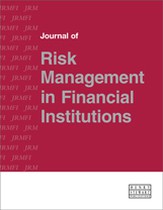Hedging the impact of climate change in the catastrophe space
Abstract
Unprecedented increases in climate change-induced extreme loss events have raised major concerns about the inadequacies of catastrophe risk financing in the insurance/reinsurance industry. The US Federal Reserve’s ultra-low interest rate policy following the 2008–2009 financial crisis, however, has transformed the catastrophe space into a new normal. Demand shocks from an influx of third-party capital have prompted capacity expansion, risk capital redistribution and premium reduction, resulting in a convergence and expansion of the traditional reinsurance and the securitised catastrophe bond markets. This research investigates optimal allocation of these two inherently different assets to help achieve ex ante full catastrophe risk sharing and intermediation. By constructing a novel two-agent sequential optimisation framework that mimics the economics of the reinsurance/insurance markets, we demonstrate through simulation how net present value (NPV)-maximising reinsurers and hedging cost-minimising insurers optimally allocate these two assets and mitigate the impact of climate change relative to catastrophe arrival intensity and severity, and other reinsurance and catastrophe bond characteristics.
The full article is available to subscribers to the journal.
Author's Biography
Carolyn W. Chang is a professor of finance at Department of Finance, California State University, Fullerton. She holds a BS in computer science from the University of Minnesota and an MBA and PhD in finance from the University of Southern California. She specialises in international finance, and insurance and risk management. She has published in the Journal of Finance, Journal of Financial Economics, Management Science, Journal of Risk and Insurance, Journal of Banking and Finance, Insurance: Mathematics and Economics, Astin Bulletin and other major journals.
Jack S.K. Chang is a professor of finance at Department of Finance and Law, California State University, Los Angeles. He holds a BE in civil engineering from the National Taiwan University, an ME in industrial engineering from the University of Toronto, and an MBA and PhD in finance from the University of Houston. He specialises in climate finance, especially in the area of catastrophe risk management. He has published in the Journal of Finance, Journal of Financial Economics, Journal of Financial and Quantitative Analysis, Management Science, Journal of Risk and Insurance, Journal of Banking and Finance, Insurance: Mathematics and Economics, Astin Bulletin and other major journals.
Citation
Chang, Carolyn W. and Chang, Jack S.K. (2017, October 1). Hedging the impact of climate change in the catastrophe space. In the Journal of Risk Management in Financial Institutions, Volume 10, Issue 4. https://doi.org/10.69554/CUVO3113.Publications LLP
